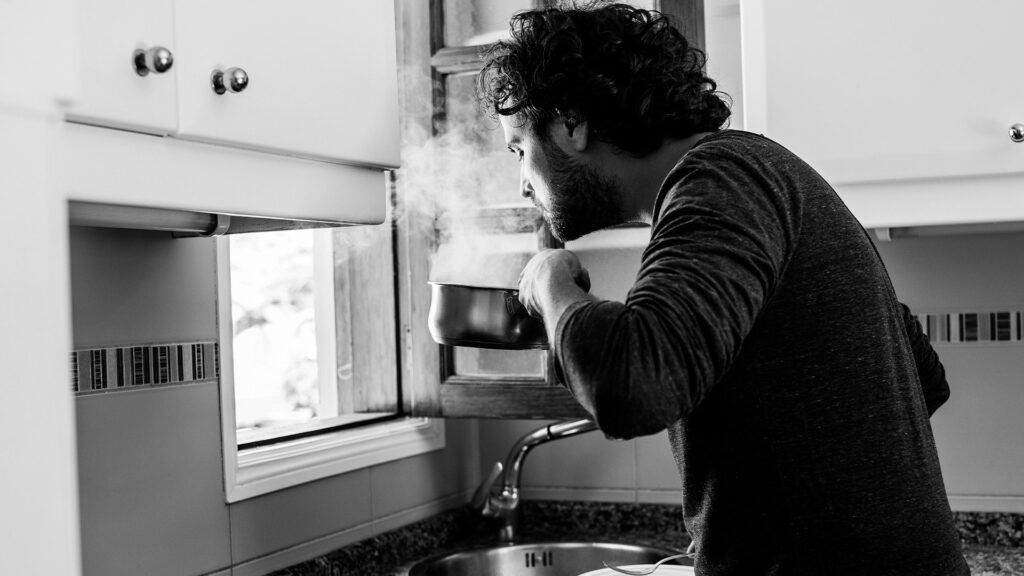
- Some people with long COVID report lasting alterations to their sense of taste and smell.
- A new treatment might help these people regain those senses and restore quality of life.
- Experts say even if the treatment is broadly successful not all patients will respond to this therapy.
A novel treatment could restore a normal sense of smell and taste in people with long COVID who have not responded to other therapies, a new study suggests.
Alterations or outright loss of taste and smell are common COVID-19 symptoms, affecting about half of everyone who gets the novel coronavirus. Most of the time, these symptoms
And for some people with long COVID, distortions in the sense of smell and taste — called phantosmia and parosmia, respectively — related to COVID-19 can last far longer.
In these people, while the condition is non-life-threatening, experts say their quality of life suffers.
“Post-COVID parosmia is common and increasingly recognized,” Dr. Adam Zoga, a study author and a professor of musculoskeletal radiology at Jefferson Health in Philadelphia, Pennsylvania, said in a press release. “Patients can develop a distaste for foods and drinks they used to enjoy.”
In the new research, which is being presented at the annual meeting of the Radiological Society of North America, doctors targeted a cluster of nerves in the neck called the stellate ganglion.
The treatment involves delivering a block to the stellate ganglion — aptly called a
It’s a technique that has been used to attempt to treat post-traumatic stress disorder (PTSD), cluster headaches, and certain rare diseases, but this is the first time it has been used to attempt to treat long COVID symptoms in a study setting.
The study consisted of a group of 54 people who had been resistant to pharmaceutical and other traditional medical treatments for parosmia.
Of those, researchers followed up with 37 participants, 22 of whom reported improved symptoms a week after treatment. In addition, most of these participants reported significant additional improvement a month after treatment.
Three months later, researchers reported that there was an average 49% improvement in these symptoms among the group. In addition, 86% of this same group who responded to the first injection had additional improvements after a second injection administered to the other side of the neck after six weeks.
Those who did not respond to the first round of injection also did not respond to the second, however. Meaning this isn’t a cure-all.
These findings have not been published yet in a peer-reviewed journal.
Although the research is preliminary, experts say the road ahead is promising.
“The early returns are very promising,” said Dr. Nathan Goodyear, an integrative medicine practitioner and the medical director of Brio-Medical who wasn’t involved in the study.
“Post-COVID olfactory dysfunction is one of the more persistent long-term symptoms associated with reduced quality of life scores post-COVID,” Goodyear told Medical News Today. “For those 15 percent of persistent olfactory dysfunction present in one-year patients, a minimally invasive therapy, which provides a rapid response rate at four weeks, allows for early intervention.”
That said, as the research itself indicates, there are limitations to this approach, Goodyear noted. One issue is that not everyone even has a stellate ganglion for doctors to block.
“The stellate ganglion is found in
For Zoga, however, the calculus is simple.
“Other treatments have failed to date,” he said in the press release. “This injection is working.”
Managing long COVID and the constellation of symptoms that characterize it isn’t simple, but experts say that there are some steps you can take to help.
Aside from standard healthy living advice like trying to get quality sleep, limiting alcohol and tobacco use, and resting and relaxing wherever possible, finding a support network of other people with long COVID can be a boon to navigating this new and challenging condition.
In the United States, that includes groups such as Body Politic, Survivor Corps, and Long COVID Support.
There’s also some research indicating some healthy diets that help lower inflammation could help diminish or shorten the duration of long COVID.
“Inflammation, whether in olfactory dysfunction or other long-COVID symptoms, is at the heart of causation,” Goodyear said. “So, if there is a common thread between the symptoms associated with long- COVID, it is inflammation.”